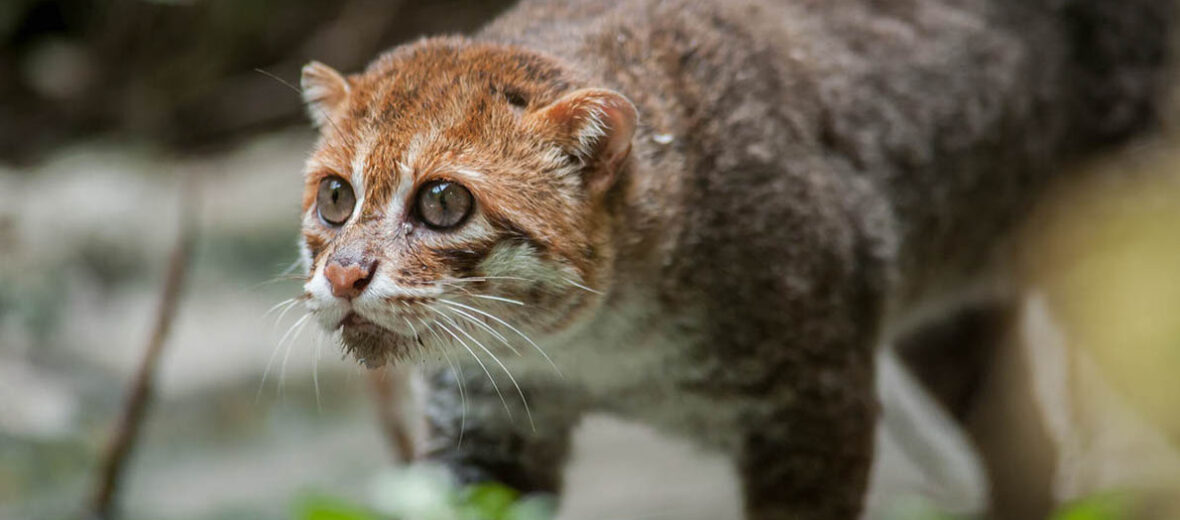
Found in Brunei, Borneo, Malaysia, Sumatra, and Thailand, the flat-headed cat is quite unique looking due to its ears being positioned to the sides of its flattened head. They prefer tropical forests, riverbanks, swamps, and oxbow lakes. With only an estimated 2,500 wild specimens remaining, these cats are listed as Endangered by the IUCN. They suffer at the hands of habitat destruction, hunting, trapping, overfishing, pollution, and secondary poisoning from agricultural runoff into the water supply that contains their main source of food… fish.
First the Stats…
Scientific name: Prionailurus planiceps
Weight: Up to 5.5 lbs.
Length: Up to 20 inches, plus up to a 6 inch tail
Lifespan: Up to 14 years
Now on to the Facts!
1.) These cats have eyes that are farther forward and closer together than other felines. This affords them stereoscopic vision.
2.) Like most other cats, they are solitary and only come together to mate.
3.) The molars of flat-headed cats are larger and sharper than other felid species. This aids in capturing and holding onto slippery prey.
4.) Their feet are even more webbed than the fishing cat’s.
5.) Based on their environment, they can be either nocturnal (active at night) or crepuscular (active at dawn and dusk). In the wild, they are nocturnal and in captivity they’re crepuscular.
But wait, there’s more on the flat-headed cat!
6.) The claws are partially retractable. Meaning that they can’t hide their claws, when not in use, the way some other cats do.
7.) Like the raccoon, these cats have been known to wash their food before eating it.
Did you know…?
These cats have been documented completely submerging their heads in water in search of food.
8.) Females undergo up to a 56 day gestation (pregnancy) that results in up to 4 kittens.
9.) Their vocalizations resemble those of a domestic cat’s.
10.) While primarily piscivores (eat fish and aquatic life), they will not only eat fish, but will also prey on crustaceans, amphibians, mice, rats, and chickens.
Now a Short Flat-Headed Cat Video!
Be sure to share & comment below! Also, check out the Critter Science YouTube channel. Videos added frequently!
Want to suggest a critter for me to write about? Let me know here.



